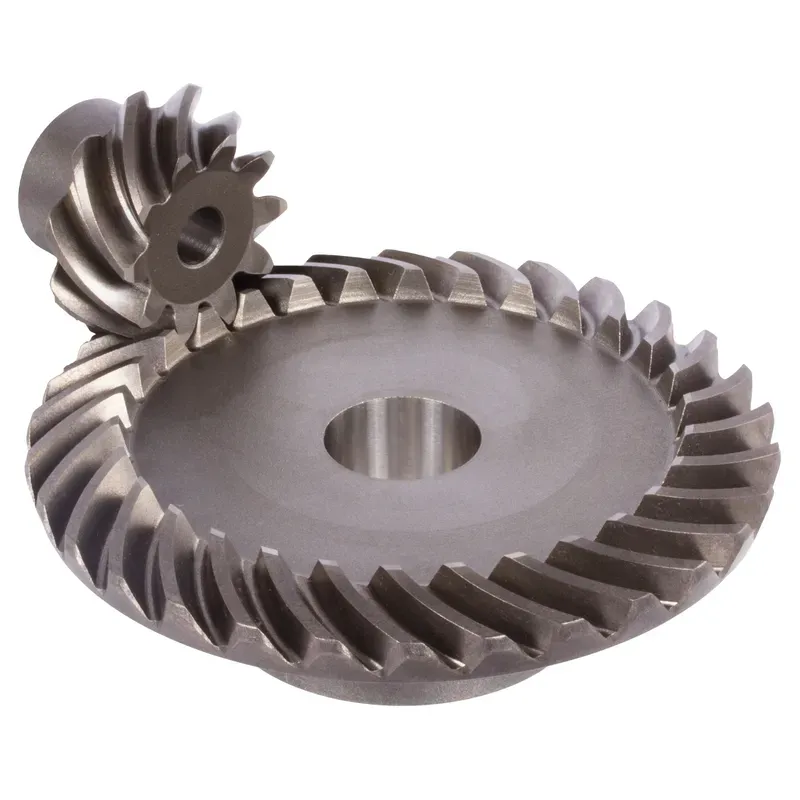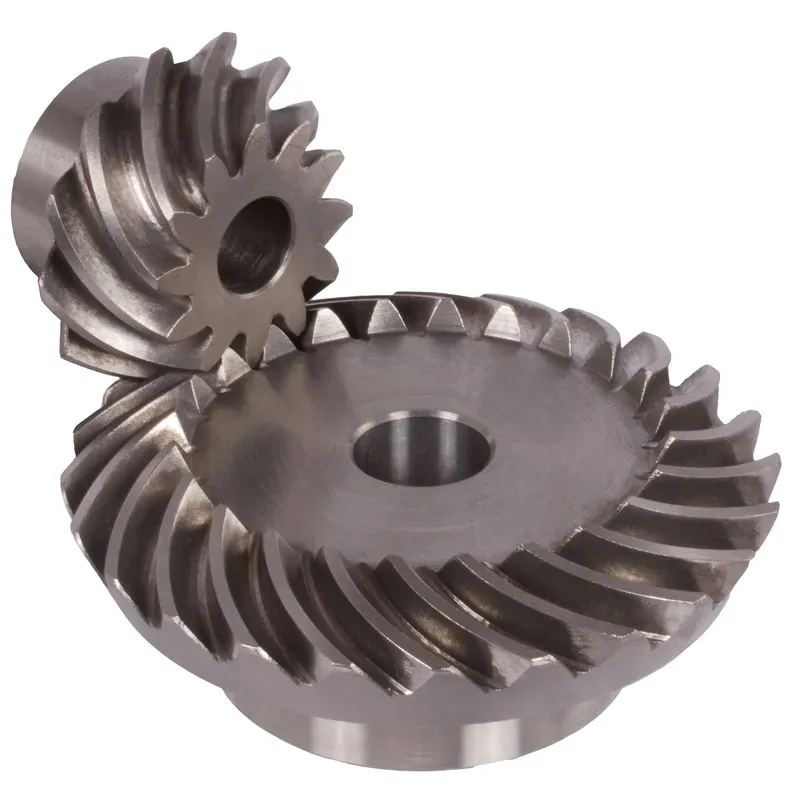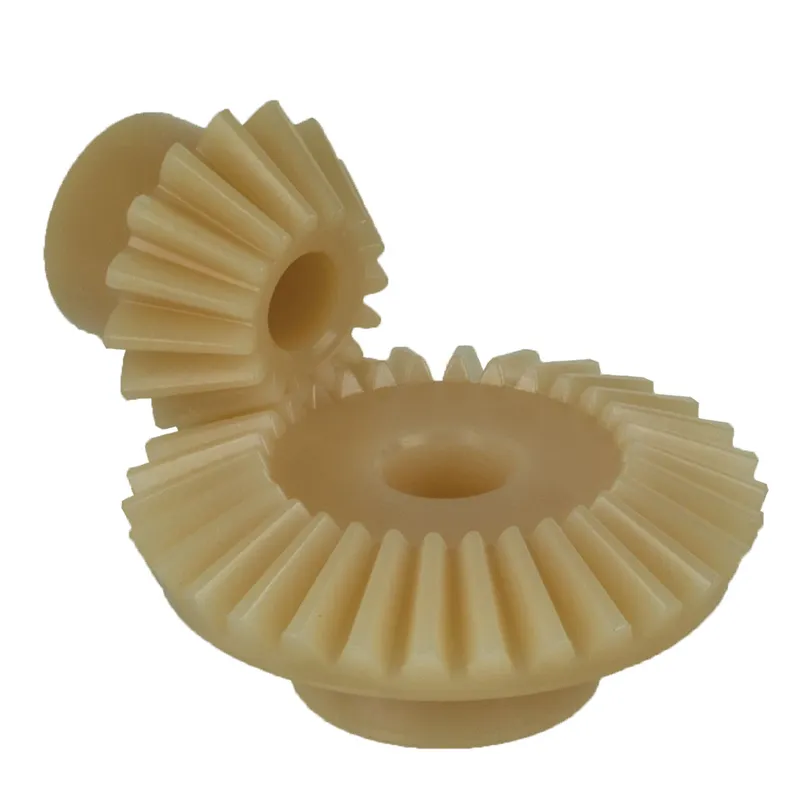Polyacetal Resin Plastic Bevel Gear Ratio 4:1 Straight Tooth System
The polyacetal resin plastic bevel gear ratio 4:1 straight tooth system refers to a mechanical gear configuration made from polyacetal resin, a thermoplastic known for its high strength, durability, and low friction properties. Bevel gears are used to transfer power between intersecting shafts, typically at a 90-degree angle. In this system, the gear ratio of 4:1 means that for every four revolutions of the input gear (the driving gear), the output gear (the driven gear) completes one revolution. The straight tooth design ensures direct, uniform contact between the gears, minimizing slippage and promoting smooth operation.
The polyacetal resin plastic bevel gear ratio 4:1 straight tooth system refers to a mechanical gear configuration made from polyacetal resin, a thermoplastic known for its high strength, durability, and low friction properties. Bevel gears are used to transfer power between intersecting shafts, typically at a 90-degree angle. In this system, the gear ratio of 4:1 means that for every four revolutions of the input gear (the driving gear), the output gear (the driven gear) completes one revolution. The straight tooth design ensures direct, uniform contact between the gears, minimizing slippage and promoting smooth operation.
This type of straight bevel gear system is commonly used in applications requiring lightweight, corrosion-resistant, and low-maintenance components, such as robotics, small machinery, and automotive systems, where precise power transmission is critical.
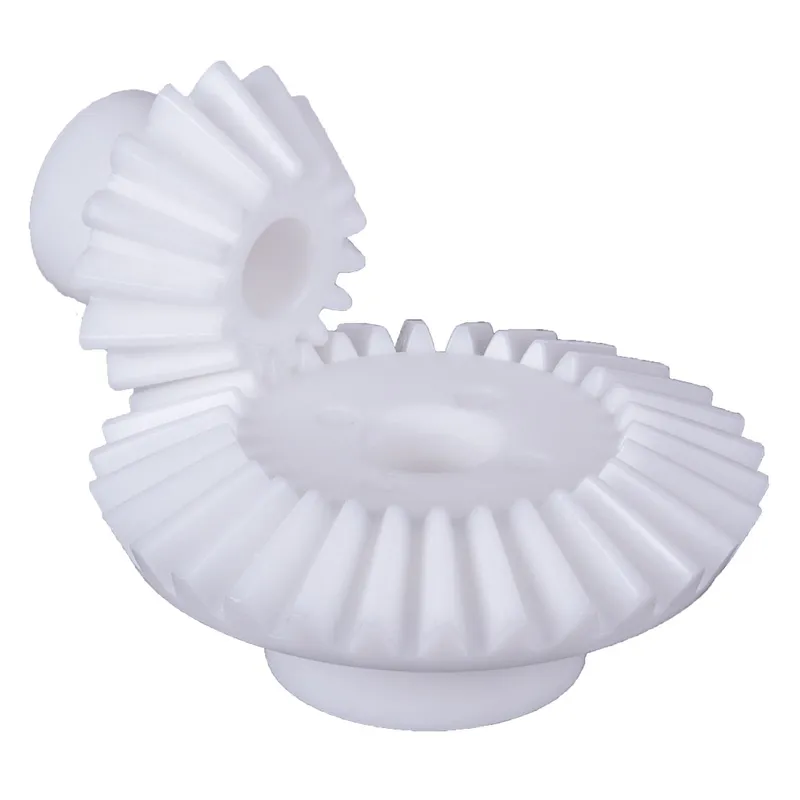
Polyacetal Resin Plastic Bevel Gear Ratio 4:1
 | 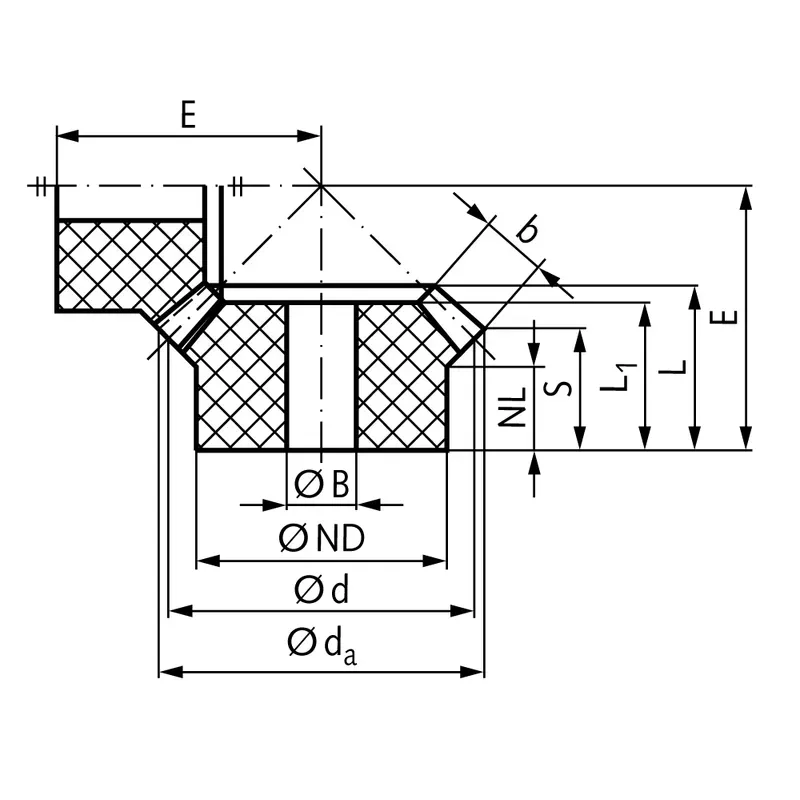 |
| Module | Number of teeth | da | d | ND | NL | L1 | L | S | b | B | E | Torque* | Weight |
| mm | mm | mm | mm | mm | mm | mm | mm | mm | mm | Ncm | g | ||
| 1 | 10 | 12 | 10 | 7,8 | 9,3 | 17,7 | 17,7 | 10,1 | 8,2 | 4 | 30,1 | 4,5 | 0,9 |
| 1 | 40 | 40,8 | 40 | 23,4 | 10,8 | 15,7 | 17 | 15,1 | 8,2 | 10 | 20,1 | 18 | 12,6 |
| 1,5 | 10 | 18 | 15 | 11,3 | 10,9 | 23,5 | 23,5 | 11,7 | 12,3 | 5 | 41,7 | 17 | 3,0 |
| 1,5 | 40 | 61,2 | 60 | 30,4 | 12,8 | 20 | 21,7 | 18,6 | 12,3 | 12 | 26,2 | 68 | 32,0 |
| 2 | 10 | 23,8 | 20 | 14,3 | 12,8 | 28,9 | 28,9 | 13,2 | 16,3 | 6 | 54 | 40 | 6,2 |
| 2 | 40 | 81,5 | 80 | 36 | 16,6 | 24,7 | 27 | 23,1 | 16,3 | 18 | 32,5 | 160 | 62,0 |
Advantages of Plastic Straight Bevel Gears
- Lightweight construction reduces overall system weight. Plastic straight bevel gears, made from materials like polyacetal resin, are significantly lighter than metal gears. This decreases the load on machinery, improving energy efficiency and ease of handling in applications like robotics or automotive systems.
- Corrosion resistance enhances durability in harsh environments. Unlike metal gears, plastic bevel gears resist rust and chemical degradation. This makes them ideal for use in moist or corrosive settings, such as food processing or marine equipment, ensuring long-term reliability without frequent maintenance.
- Low friction improves operational efficiency. Polyacetal and other plastics have inherent lubricity, reducing friction during gear meshing. This minimizes wear, extends gear lifespan, and lowers energy consumption in systems like conveyor belts or precision instruments, where smooth operation is critical.
- Cost-effective production lowers manufacturing expenses. Plastic gears are typically injection-molded, allowing for high-volume production at reduced costs compared to machining metal gears. This affordability benefits industries like consumer electronics, where budget constraints demand economical yet reliable components.
- Noise reduction enhances user experience. Straight bevel plastic gears operate more quietly than metal counterparts due to their material properties. This is advantageous in applications like office equipment or medical devices, where minimizing noise is essential for a comfortable or distraction-free environment.
- Design flexibility supports complex applications. Plastic gears can be molded into intricate shapes with high precision, accommodating unique shaft angles or compact designs. This versatility suits specialized machinery, such as in aerospace or automation, where tailored gear configurations optimize performance and space efficiency.
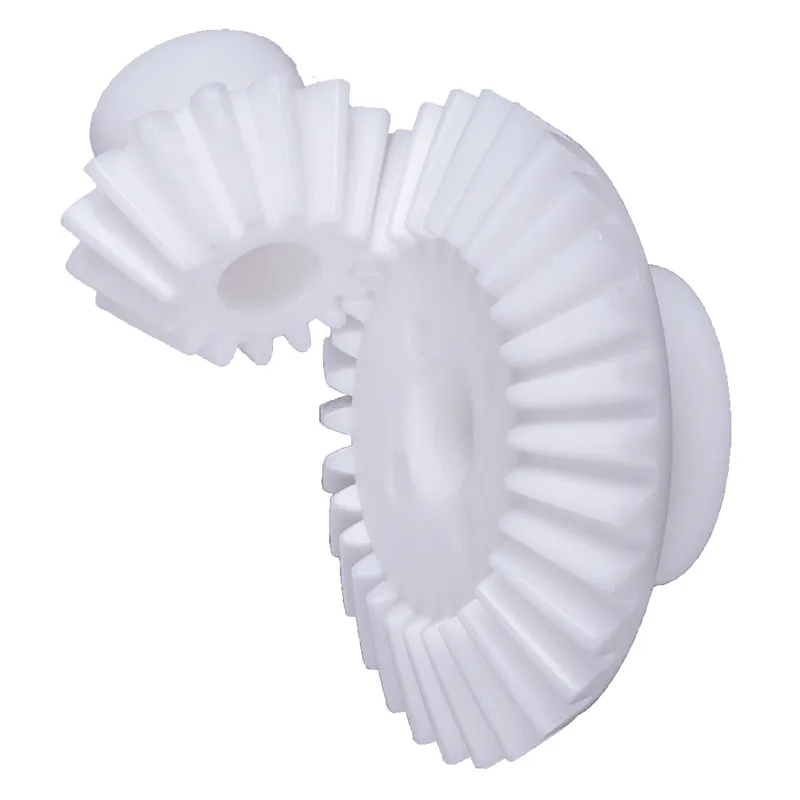
Plastic Bevel Gear Application Industry
- Automotive Industry
Plastic bevel gears are widely used in automotive applications, such as windshield wipers, seat adjustment mechanisms, and sensor systems. Their lightweight and corrosion-resistant properties enhance fuel efficiency and durability while reducing noise levels for a quieter driving experience. - Medical Devices
In the medical industry, plastic gears are utilized in equipment like infusion pumps, surgical tools, and diagnostic machines. Their self-lubricating properties prevent contamination, while their lightweight nature allows for portable and user-friendly designs, critical for healthcare applications. - Consumer Electronics
Plastic bevel gears play a key role in devices such as printers, cameras, and household appliances. Their low noise operation, design flexibility, and cost-effectiveness make them ideal for small, precise, and affordable mechanisms in modern consumer products. - Aerospace Industry
In aerospace, plastic gears are used in lightweight components for drones, satellites, and aircraft systems. Their ability to perform reliably under varying conditions, combined with weight reduction, contributes to fuel efficiency and optimal performance in high-tech aviation devices. - Robotics and Automation
Robots and automated systems often incorporate plastic bevel gears in joint movements, actuators, and precision tasks. Their low friction, quiet operation, and design adaptability make them essential for smooth and efficient robotic motion in industrial and service applications. - Food and Beverage Industry
Plastic bevel gears are essential in food processing and packaging machines, where corrosion resistance and self-lubrication are critical. They ensure hygiene, comply with food safety standards, and operate efficiently in environments with moisture and frequent cleanings.
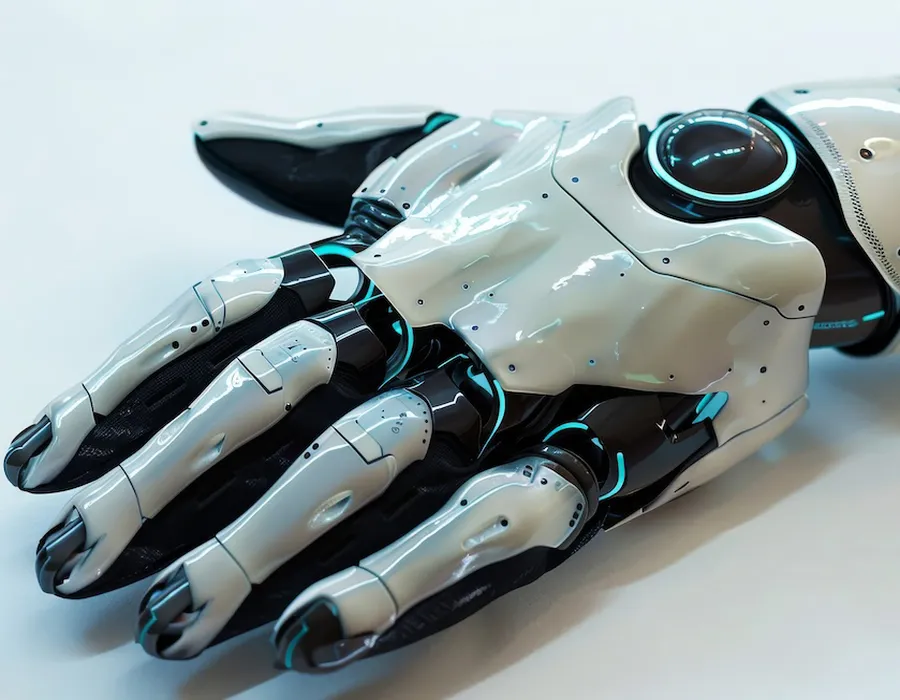 |  |
| Bevel Gear for Robotics and Automation | Bevel Gear for Consumer Electronics |
 | 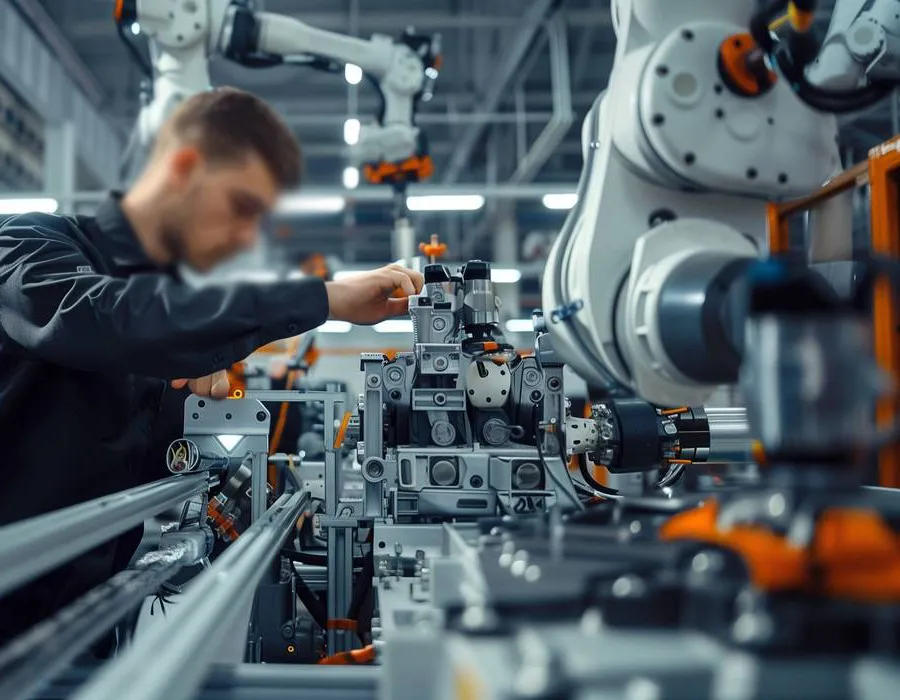 |
| Bevel Gear for Automotive Industry | Bevel Gear for Industrial Machinery |
Plastic Bevel Gear vs Stainless Steel Bevel Gear
Plastic bevel gears and stainless steel bevel gears are widely used in various industries, but they differ significantly in terms of material properties, performance, and applications.
- Material Composition and Weight
Plastic bevel gears are made from lightweight polymers like polyacetal resin or nylon, making them much lighter than stainless steel bevel gears. Stainless steel bevel gears, on the other hand, are made from durable and heavy metal alloys, which contribute to their robust construction and higher density. The lightweight nature of plastic gears makes them ideal for applications where weight reduction is critical, while stainless steel gears are better suited for heavy-duty systems requiring strength. - Durability and Strength
Stainless steel bevel gears are significantly stronger and more durable than plastic gears, capable of withstanding higher loads and torque. They are ideal for heavy machinery and industrial applications where substantial mechanical stress is involved. Plastic bevel gears, although less strong, are sufficient for lighter applications and offer adequate durability in environments where excessive force is not applied. - Corrosion Resistance and Environmental Suitability
Plastic gears are inherently resistant to corrosion and are ideal for use in humid or chemically aggressive environments. Stainless steel gears also resist corrosion but are more suitable for harsher industrial conditions involving high temperatures, abrasion, or extreme forces. - Noise and Vibration
Plastic bevel gears operate more quietly than stainless steel gears due to their lower friction and natural damping properties. This makes plastic gears preferable in applications like medical devices or consumer electronics, where noise reduction is critical. - Cost and Maintenance
Plastic bevel gears are generally more affordable to produce and require less maintenance because they are often self-lubricating. Stainless steel gears are more expensive due to the cost of materials and machining but provide a longer lifespan in demanding applications. - Applications
Plastic bevel gears are commonly used in lightweight, low-stress systems such as toys, home appliances, and robotics. Stainless steel bevel gears, on the other hand, are preferred in high-stress industrial machinery, automotive systems, and aerospace technologies, where strength and reliability are paramount.
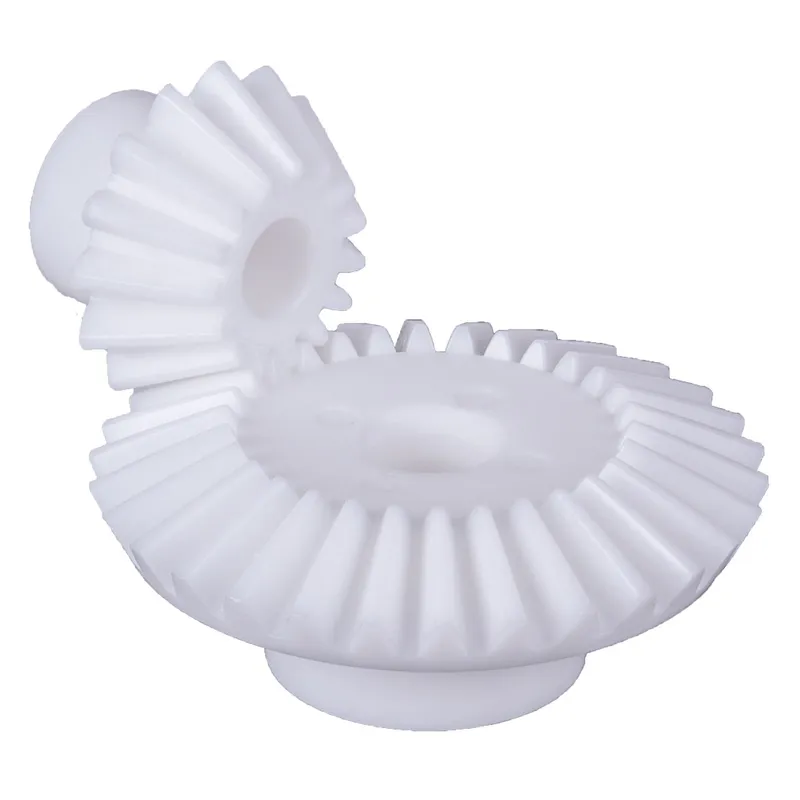 | 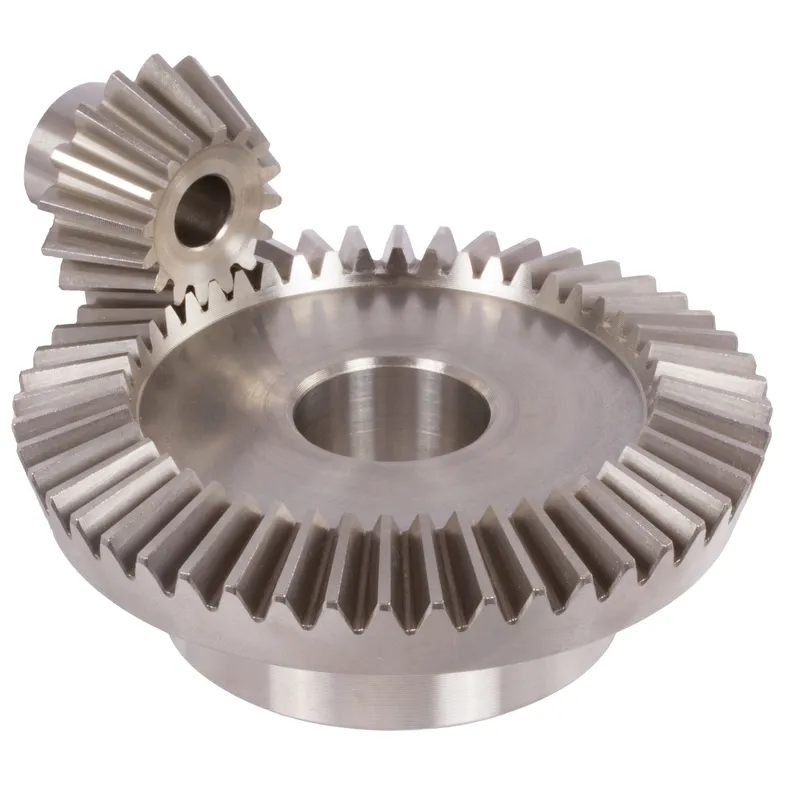 |
| Plastic Bevel Gear | Stainless Steel Bevel Gear |
Additional information
| Edited by | Yjx |
|---|
